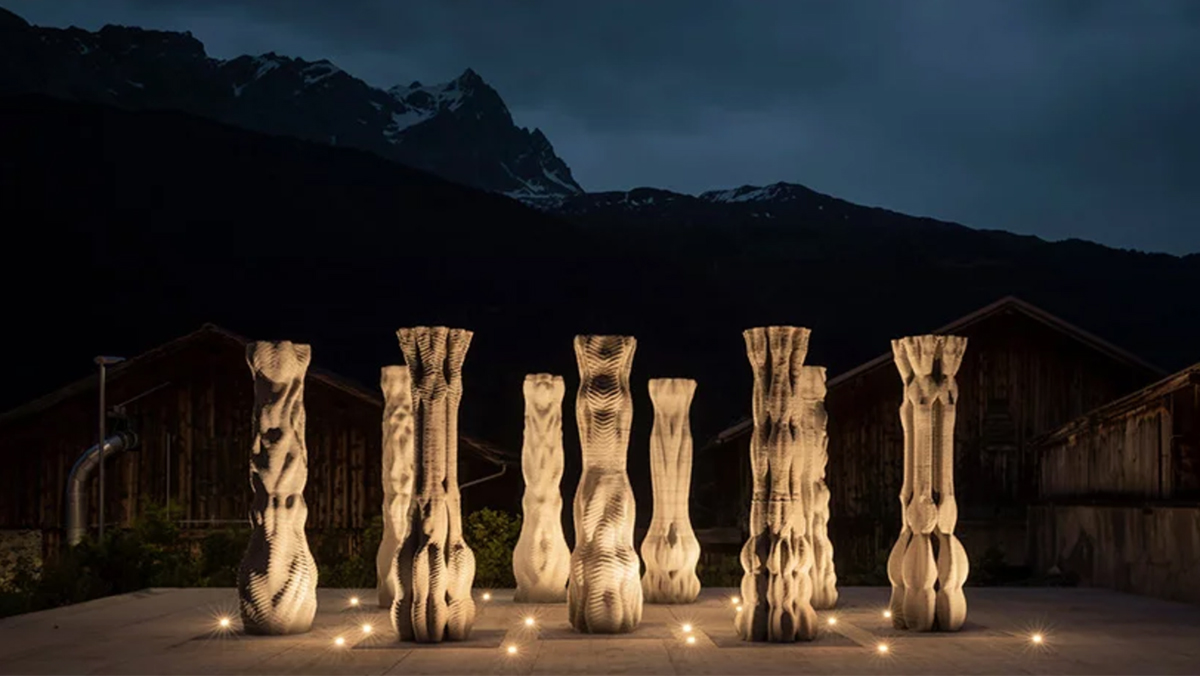For the Origen Festival in Riom, Switzerland students in the Masters of Advanced Studies in Architecture and Digital Fabrication program at ETH Zurich, guided by researcher Ana Anton, 3D printed nine unique, computationally-designed columns with a new layered extrusion printing process developed at the university over the past year and a half.
ETH students and researchers created nine unique, 9-foot-tall concrete columns that came together as an installation titled Concrete Choreography. The arrangement of undulating columns served as an environment for dance performances. “The columns create the stage and set for the artists to dance in between, in front, around, to hide, climb and interact in many ways with this unique, monolithic architecture,” explained Anton. “Each column has its own particular expressivity and dynamics, just like the dancers.”

The students used an automated, formwork-less process, called Concrete Extrusion 3D Printing (CE3DP), a printing method that continuously deposits and extrudes concrete in .2-inch-thick layers to create complex geometries. Anton has been experimenting with the process for a year and a half, as part of an interdisciplinary collaboration between ETH’s Digital Building Technologies and the chair of Physical Chemistry of Building Materials. Anton says that for the column’s nine unique forms, “students worked towards finding unique designs suitable to this fabrication method, meaning more fluid geometries locally detailed using material-driven ornament,” going on to say that the geometries they worked with are only possible because of the high-resolution printing of CE3DP.
ETH’s Digital Building Technologies lab claims this method comes “with the advantage of precise, digitized shape customization [that is] ideal for the creation of freeform shapes that would be impossible to produce with any other technology on the market.” CE3DP also has the added advantage of being fast; the columns each took just 1.5-to–2.5 hours to create.
According to Anton, “The forest of columns should work both as performance space but also as an outdoor installation which invites visitors to explore the garden before and after the dance.”
